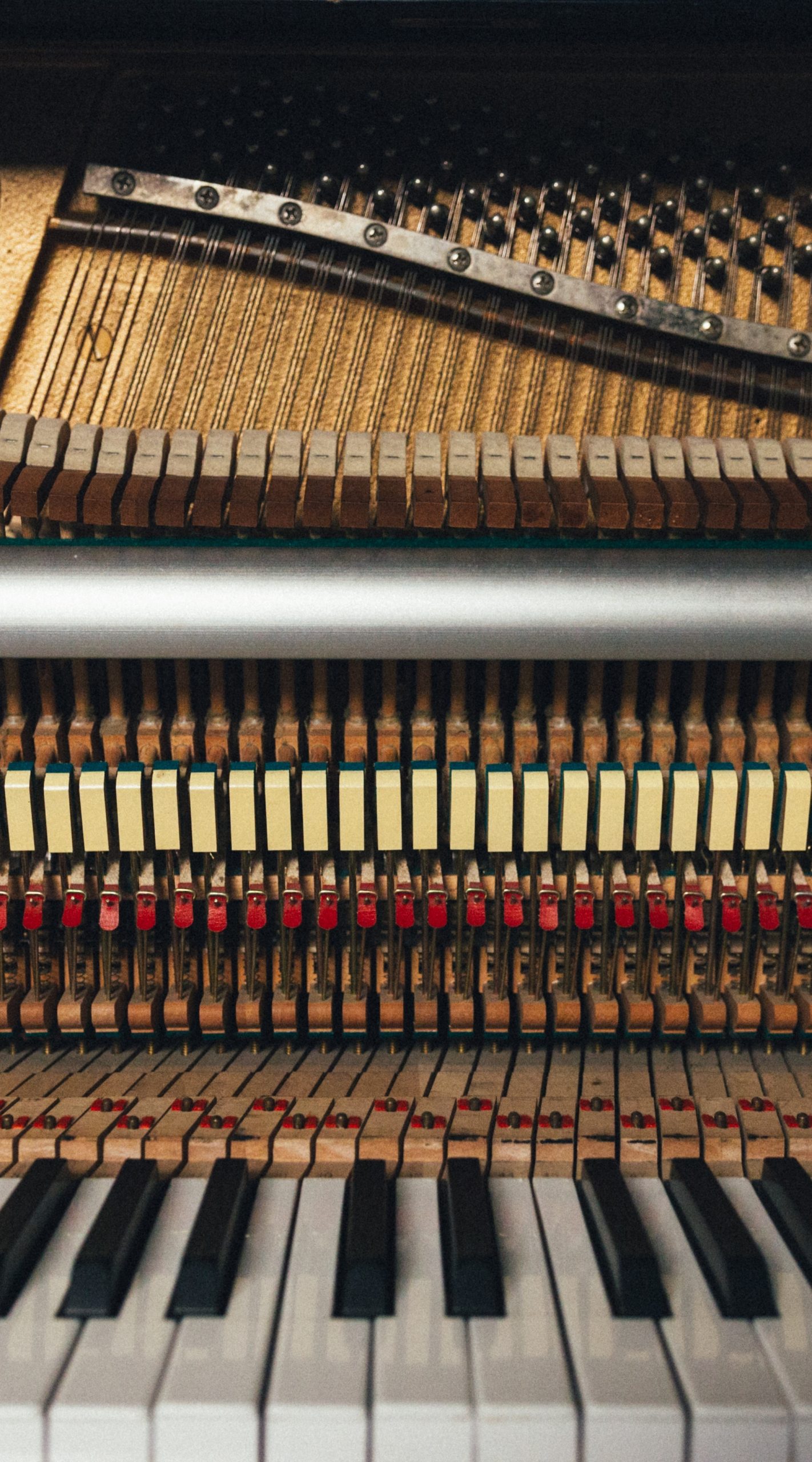HOW TO TUNE A PIANO YOURSELF
Even if you’re a beginner, tuning a piano yourself is possible as long as you have a good ear, plenty of patience, agility, and a certain number of tools. But how do you tune your piano properly?
Invest in the Right Tools
With 220 strings and 88 keys, it’s obvious that a piano can’t be tuned like a guitar. It also requires specific instruments. In addition to time, you’ll need:
- a chromatic tuner, to have a perfect frequency in A440
- a tuning fork
- a tuning table
- a tuning key or peg with a tip and a diameter suited to the pins of the piano, and square, rectangular, or star in shape, if possible with keys with interchangeable heads
- felt strips or rubber wedge mutes that let you block two strings of a note while you adjust the third
- plastic clips that slip between the mechanisms in order to muffle two strings at once
- a powerful lamp to illuminate the inside of the piano.
Using unsuitable screwdrivers and keys or homemade tools to save money is not a good idea, because they risk damaging the pins and mechanisms of the piano.
Take a Few Precautions
Before tuning the piano, it’s necessary to take several precautions in order to tune your piano properly, to avoid damaging the mechanisms, strings, and pins, and to prevent injuries.
- Close the doors and windows, and empty the room: no noise or person should be able to disturb the tuning of the piano.
- Put on gloves, as some parts of the body and frame are sharp.
- Handle the hammers, mechanisms, pins, and felts with care.
- Stay focused and careful, and avoid hurried gestures.
- Don’t work on the wrong string, and remember that you increase the tone by turning a pin to the right and decrease it by turning it to the left.
Follow the Different Tuning Steps
- Begin by pressing the loud pedal, located on the right, several times in order to place each wedge mute between the strings.
- Then, place a plastic clip or two wedge mutes in order to muffle the strings beside it.
- Then, first of all, tune the A Central of the piano, the A440, then the central string of the three-string choruses, by turning the pins one twelfth of a circle slowly but in one go.
- Play the desired note while releasing the loud pedal in order to verify the tone with the chromatic tuner.
- Proceed in this way to tune all the notes in the middle octave, located in the centre of the keyboard.
- Repeat this operation, but this time for the higher octave and the lower octave.
- Then, once the notes in these three octaves have been tuned, compare them.
- Then, tune the following octaves by ear.
A Few Pro-Tips
During tuning operations, it’s important to loosen the string before tensing it to modify the tone: this prevents it from breaking due to excess tension.
For proper tuning, you have to hit the key hard to adjust it: overly soft playing will cause the piano to detune as soon as a pianist hits a key hard.
With a sophisticated knowledge of the chords of an acoustic piano, octaves, and harmony, you can tune your piano yourself. Of course, you’ll have to purchase a certain number of tools, but this investment will pay off in just a few tunings, given that it’s recommended to tune your piano four times a year.

TRY A FREE LESSON
STAY IN TOUCH
